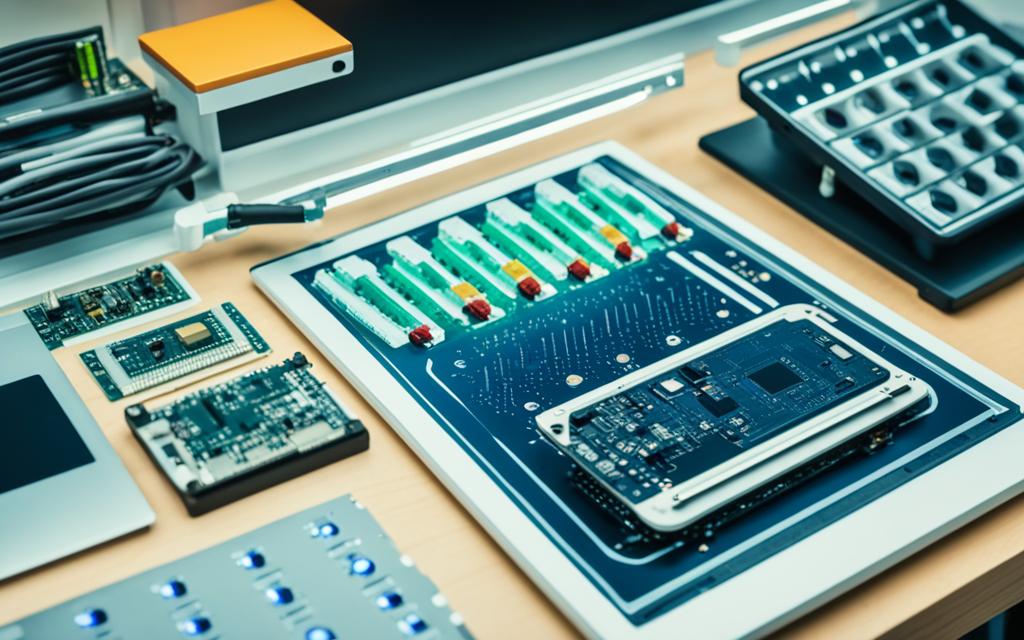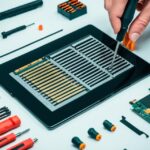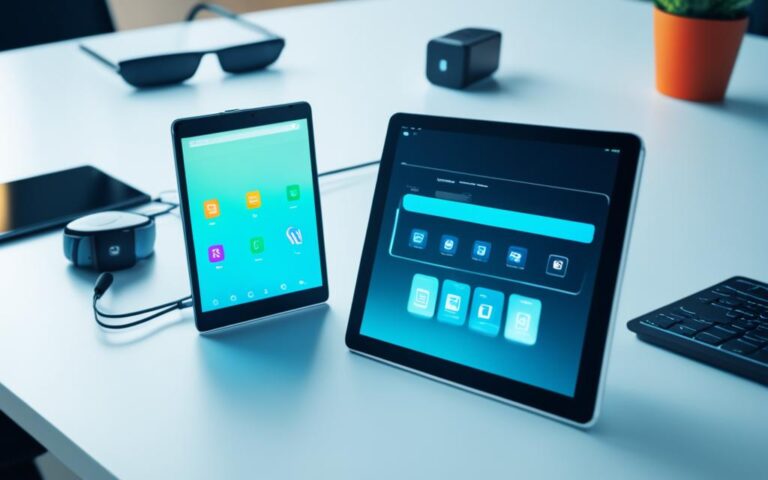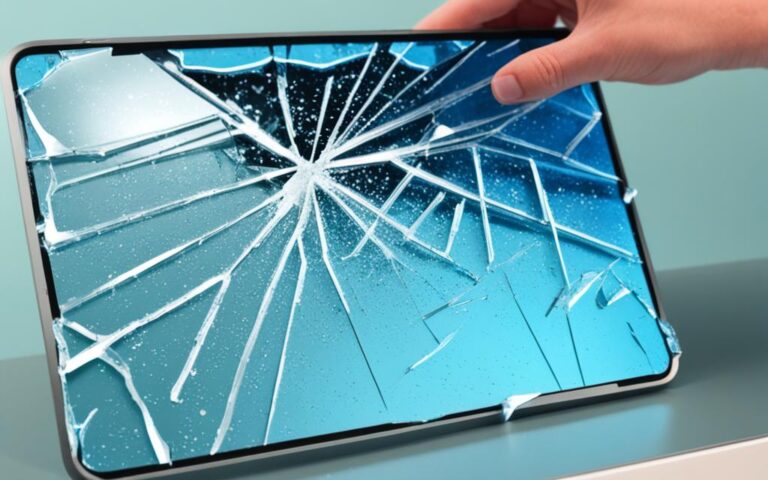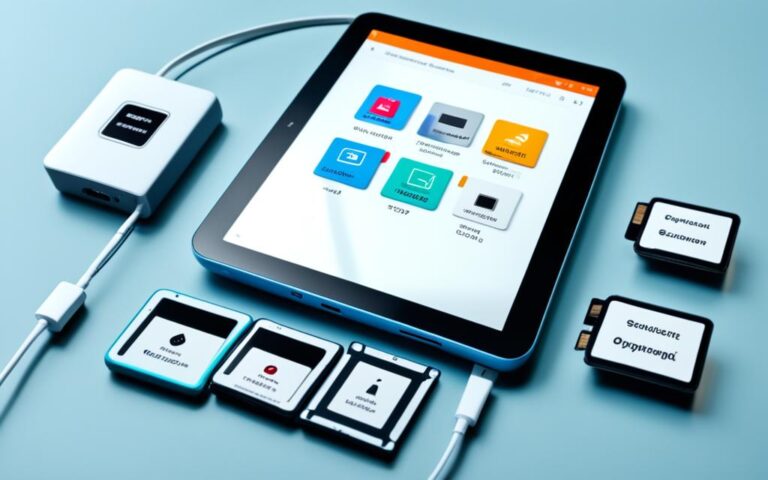The Pros and Cons of Self-Repairing Your Tablet
When your tablet is damaged, it can be frustrating and costly to figure out the best course of action. Repairing your tablet yourself, also known as DIY tablet repair or tablet self-repair, is an option that many consider. While it has its advantages, it also comes with its share of disadvantages. In this article, we will explore the pros and cons of self-repairing your tablet to help you make an informed decision.
Repairing a tablet yourself can be a cost-effective choice. By opting for self-repair, you can potentially save a significant amount of money compared to purchasing a new tablet or paying for professional repair services. However, it’s important to consider certain factors before deciding whether to repair or replace your tablet.
The age of your device, the extent of the damage, and the cost of repair are all crucial aspects to take into account. Sometimes, repairing the screen at a trusted repair shop can save you over 40% compared to buying a new tablet. Examine the warranty and insurance coverage of your device as well. If your tablet meets your needs and the cost of repair is reasonable, it may be worth considering self-repair.
However, it’s essential to weigh the pros and cons carefully. In the following sections, we will delve deeper into the factors to consider when repairing your tablet, the benefits and risks of self-repairing, alternatives to self-repair, and the final conclusion to help you make an informed decision about the best course of action for your tablet.
Factors to Consider When Repairing Your Tablet
When faced with a damaged tablet, it is important to weigh the factors that will influence your decision to repair or replace your device. By considering the tablet repair cost, the tablet warranty, and the tablet lifespan, you can make a well-informed choice.
Tablet Repair Cost
The cost of repairing a tablet can vary depending on several factors:
- The specific device model
- The type and extent of the damage
- The availability and cost of replacement parts
It is worthwhile to compare the repair cost to the price of a new tablet. This will help you determine if repairing the device is a cost-effective solution.
Tablet Warranty
Checking the warranty and insurance coverage of your tablet is crucial before opting for a repair. If your tablet is still under warranty, you may be eligible for free or low-cost repairs or even a full device replacement. However, it is important to note that attempting a self-repair or going to an unauthorized repair shop may void your warranty.
Tablet Lifespan
The average lifespan of a tablet is typically around 5 years. However, this can vary based on factors such as:
- Usage patterns
- Frequency of software updates
- Proper maintenance and care
When deciding whether to repair or replace your tablet, take into account its age and overall condition. If your tablet meets your needs and the repair cost is reasonable, extending its lifespan through repair may be a worthwhile investment.
Common tablet problems to consider include:
- Cracked screens
- Battery lifespan and performance
- Water damage
- Software malfunctions
By evaluating these factors, you can make an informed decision about whether to repair your tablet or explore other alternatives.
| Tablet Model | Repair Cost | New Tablet Price |
|---|---|---|
| Apple iPad 10.2 | £100 | £300 |
| Samsung Galaxy Tab S7 | £150 | £600 |
| Microsoft Surface Pro 7 | £200 | £900 |
Pros of Self-Repairing Your Tablet
Self-repairing your tablet offers several benefits. It can save you money, as repairing a tablet is often cheaper than buying a new one. By replacing damaged components, you can extend the lifespan of your tablet and continue using it for your needs.
- Cost Savings: Repairing your tablet yourself can lead to significant cost savings. Instead of purchasing a brand new tablet, you can invest in replacement parts and repair tools, which are usually more affordable. This can help you avoid spending a large sum of money on a new device.
- Extended Lifespan: DIY tablet repairs allow you to address specific issues and replace faulty components. By doing so, you can potentially extend the lifespan of your tablet and continue using it for a longer period of time. This not only saves you money in the short term but also reduces electronic waste.
- Sense of Accomplishment: Successfully repairing your tablet on your own can provide a sense of accomplishment and satisfaction. It allows you to take control of the situation and become more knowledgeable about your device. You may even develop new skills and gain confidence in handling similar repairs in the future.
With the right tools and guides, you can fix simple issues like cracked screens or charging ports on your own.
Taking the initiative to self-repair your tablet not only offers cost savings but also the opportunity to prolong its lifespan. It provides a sense of accomplishment and empowers you to take control of your device’s maintenance and repairs.
Cons of Self-Repairing Your Tablet
While self-repairing your tablet may seem like a convenient option, it is essential to be aware of the potential drawbacks involved. Here are some cons to consider:
- Risk of Voiding Warranty: One major risk of self-repair is the possibility of voiding the warranty or insurance coverage of your device. If you attempt to repair your tablet yourself, the manufacturer may no longer provide support, and future issues may not be covered. It’s important to evaluate the terms and conditions of your warranty before proceeding with any repairs.
- Complexity of Repairs: Repairing certain components of a tablet, such as the screen or internal parts, can be a complex task. It requires technical knowledge and experience to ensure proper troubleshooting and successful repair. Even a small mistake or mishandling during the repair process can lead to further damage or even render the device unusable.
- Limited Availability of Tools and Equipment: Some tablet repairs may require specialized tools or equipment that may not be readily available to consumers. Without access to the necessary tools, it can be challenging to carry out certain repairs effectively. This limitation adds an additional layer of complexity to the self-repair process.
“Self-repairing your tablet may result in voiding the warranty or insurance coverage, and complex repairs should only be attempted by those with technical expertise.”
To illustrate the importance of technical knowledge, consider a scenario where an inexperienced individual attempts to replace the tablet screen but ends up damaging other internal components due to lack of expertise. Not only does this escalate the complexity of the repair, but it also incurs additional costs. This is why it’s crucial to weigh the risks and benefits carefully before embarking on self-repair.
Despite the potential risks and challenges associated with self-repair, many individuals still choose to undertake these tasks independently. The decision ultimately depends on a person’s confidence in their technical skills and their willingness to accept the potential consequences.
Alternatives to Self-Repair
If you’re not comfortable with self-repair, there are alternative options available for repairing your tablet. Engaging the services of tablet repair professionals or authorized repair providers can ensure that your tablet is repaired properly, using genuine parts. These trusted professionals have the expertise and resources to handle various tablet repairs efficiently. Additionally, they may offer warranties for their work, providing you with peace of mind.
Another alternative to self-repair is to trade in your old tablet for an upgrade if it’s in good condition. Many manufacturers and retailers offer trade-in programs where you can exchange your old tablet for a discount on a new one. This way, you can get a new tablet with the latest features while disposing of your old tablet responsibly.
When it’s time to replace your tablet, it’s important to consider recycling options. Disposing of electronic devices in regular waste can be harmful to the environment due to the presence of hazardous materials. To ensure responsible electronic waste management, many electronics recycling programs and certified recycling centers accept old tablets and other devices for safe disposal. Recycling your tablet not only helps protect the environment but also ensures that valuable materials are recovered and reused.
Authorized Repair Providers Comparison
| Name | Services Offered | Warranty |
|---|---|---|
| Manufacturer Service Centers | Repairs for specific brands/models | Manufacturer warranty |
| Trusted Repair Shop A | Repairs for various brands/models | 90-day warranty |
| Trusted Repair Shop B | Repairs for various brands/models | 1-year warranty |
Table: Authorized Repair Providers Comparison
| Name | Services Offered | Warranty |
|---|---|---|
| Manufacturer Service Centers | Repairs for specific brands/models | Manufacturer warranty |
| Trusted Repair Shop A | Repairs for various brands/models | 90-day warranty |
| Trusted Repair Shop B | Repairs for various brands/models | 1-year warranty |
Conclusion
When it comes to deciding whether to tackle tablet self-repair, it’s crucial to approach the decision-making process with careful consideration. Take into account factors such as the cost of repair, warranty coverage, complexity of repairs, and your comfort level with DIY fixes.
Undoubtedly, self-repairing your tablet can offer significant advantages. Firstly, it presents an opportunity to save money while extending the lifespan of your device. By addressing and replacing damaged components, you can keep using your tablet for your specific needs. Additionally, the sense of accomplishment and the chance to expand your knowledge about your device are valuable benefits.
However, it’s important to be aware of the potential drawbacks. Self-repairs can result in voiding warranties or insurance coverage, so consider the implications before proceeding. Repairing complex components like screens or internal elements requires technical expertise and experience. A simple mistake can lead to further damage. Moreover, some repairs may demand specialized tools or equipment that may not be readily accessible to consumers.
If you’re uncertain or apprehensive about self-repairing, it’s wise to seek assistance from professional repair services or authorized repair providers. These experts possess the necessary knowledge, resources, and genuine parts to ensure proper repairs. Ultimately, the aim is to make an informed decision that aligns with your specific needs and budget.
